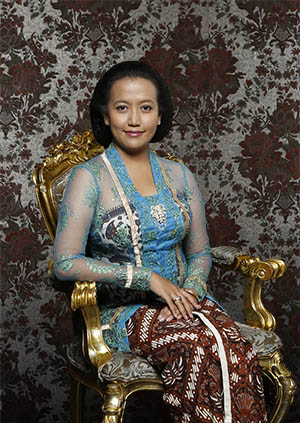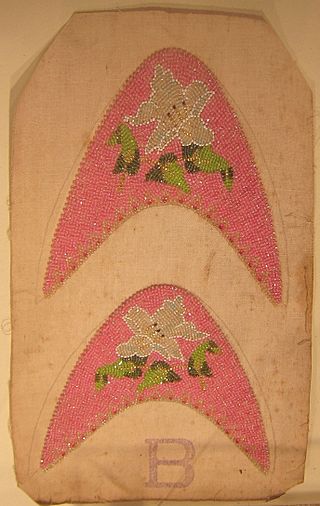
The Peranakans are an ethnic group defined by their genealogical descent from the first waves of Southern Chinese settlers to maritime Southeast Asia, known as Nanyang, namely the British Colonial ruled ports in the Malay Peninsula and the Indonesian Archipelago, as well as Singapore. Peranakan culture, especially in the dominant Peranakan centres of Malacca, Singapore, Penang, Phuket and Tangerang, is characterized by its unique hybridization of ancient Chinese culture with the local cultures of the Nusantara region, the result of a centuries-long history of transculturation and interracial marriage.

Malaysian Chinese, alternatively Chinese Malaysians, are Malaysian citizens of Han Chinese ethnicity. They form the second-largest ethnic group, after the Malay majority, and are 22.8% of the Malaysian population. Most of them are descendants of Southern Chinese immigrants who arrived in Malaysia between the early 19th and the mid-20th centuries. Malaysian Chinese form the second largest community of Overseas Chinese in the world, after Thai Chinese. Malaysian Chinese are traditionally dominant in the business sector of the Malaysian economy.
The Chitty, also known as the Chetty or Chetti Melaka, are a distinctive group of Tamil people found mainly and originally in Melaka, Malaysia, and in Singapore where they migrated to in the 18th and 19th centuries from Melaka, who are also known as the "Indian Peranakans" and have adopted Malay (mostly) and Chinese cultural practices whilst also retaining their Hindu faith and heritage. In the 21st century, their population stands at 2,000. The Chitty/Chetti community or Chettiar community, is from South India and are devout Hindus.

Malacca City is the capital city of the Malaysian state of Malacca, in Melaka Tengah District. It is the oldest Malaysian city on the Straits of Malacca, having become a successful entrepôt in the era of the Malacca Sultanate. The present-day city was founded by Parameswara, a Sumatran prince who escaped to the Malay Peninsula when Srivijaya fell to the Majapahit. Following the establishment of the Malacca Sultanate, the city drew the attention of traders from the Middle East, South Asia, and East Asia, as well as the Portuguese, who intended to dominate the trade route in Asia. After Malacca was conquered by Portugal, the city became an area of conflict when the sultanates of Aceh and Johor attempted to take control from the Portuguese.
Hang Li Po was reported to be a Chinese princess sent by the Ming Dynasty to be wed to Malaccan Sultan Mansur Shah, according to the Malay Annals. However, there is ongoing debate on the existence of Hang Li Po actually being a historical person. As there is no reference to Hang Li Po in any Ming dynasty records. Also, the 16th century Portuguese account, Suma Oriental does not mention a Chinese princess wedded to Sultan Mansur Shah, but instead refers to an unnamed Chinese girl who married Malacca’s second ruler, Sultan Megat Iskandar Shah three decades separating the former ruler to Mansur Shah.

A kebaya is an upper garment traditionally worn by women in Southeast Asia, notably in Brunei, Indonesia, Malaysia, Singapore and Southern Thailand. It is also worn in parts of southern Philippines and Cambodia.

Peranakan cuisine or Nyonya cuisine comes from the Peranakans, descendants of early Chinese migrants who settled in Penang, Malacca, Singapore and Indonesia, inter-marrying with local Malays. In Baba Malay, a female Peranakan is known as a nonya, and a male Peranakan is known as a baba. The cuisine combines Chinese, Malay, Javanese, South Indian, and other influences.

Peranakan beaded slippers, also known as Kasut Manik, literally meaning "beaded shoes", is a type of shoe that dates back to the early twentieth century Malaya. It refers to beaded slippers worn by a nyonya to complete her Sarong Kebaya outfit, together with chained brooches (kerosang) and a silver belt. The slippers are made of Peranakan cut beads, which are treasured as these beads are no longer available. Vintage Kasut Maniks are intricate and finely stitched, a testimony to the fine workmanship of yesteryears. The intricacy and fine workmanship of a pair of the beaded slipper is also a hallmark of highly accomplished Peranakan women, also known as Nyonya, whose skills in embroidery and beadwork are highly valued.

Architecture in Malaysia traditionally consist of malay vernacular architecture. Though modern contemporary architecture is prevalent in urban areas there are style influences from Islamic, colonial architecture, chinese straits etc. New materials, such as glasses and nails, were brought in by Europeans, changing the architecture.

Pakaian is the term for clothing in Malaysia's national language. It is referring to things to wear such as shirts, pants, shoes etc. Since Malaysia is a multicultural nation: Malay, Chinese, Indian and hundreds of other indigenous groups of Malay peninsula and Borneo, each has its own traditional and religious articles of clothing all of which are gender-specific and may be adapted to local influences and conditions. Previously, traditional clothes were worn daily. However, by excluding Baju Melayu, Baju Kurung many are now only worn on special occasions such as marriage ceremonies and cultural events.

The Peranakan Museum is a museum and gallery in the Museum district of Singapore that specialises in the country's Peranakan culture. It is the sister museum of the Asian Civilisations Museum.

Baba House is a museum in Singapore, showcasing Peranakan history, architecture and heritage. It is a traditional Peranakan pre-war terrace-house which was formerly owned by the family of a 19th-century shipping tycoon Wee Bin who settled in Singapore, after arriving from the southern Chinese province of Fujian. The Baba House is also an outpost of the National University of Singapore (NUS) Museum and co-managed by the NUS Centre for the Arts.

Malacca, officially the Historic State of Malacca, is a state in Malaysia located in the southern region of the Malay Peninsula, facing the Strait of Malacca. The state is bordered by Negeri Sembilan to the north and west and Johor to the south. The exclave of Tanjung Tuan also borders Negeri Sembilan to the north. Its capital is Malacca City, which has been listed as a UNESCO World Heritage Site since 7 July 2008. Malacca City is 148 kilometres southeast of Malaysia's capital city Kuala Lumpur, 235 kilometres northwest of Johor's largest city Johor Bahru and 95 km northwest of Johor's second largest city, Batu Pahat.

Kueh Pie Tee is a thin and crispy pastry tart shell kuih often filled with a spicy, shredded Chinese turnips, sweet mixture of thinly sliced vegetables and prawns. It is a popular Peranakan dish, that is often consumed during Chinese New Year or tea parties. The shells are made of flour and though some stores will make them from scratch, they can usually be found ready made in most supermarkets. Similar to popiah, the main filling is shredded jicama and carrots, and usually these two dishes are sold by the same stall in hawker centres.

Kampung Cina, is a Chinatown located in Kuala Terengganu, Terengganu, Malaysia. Kampung Cina is located along Jalan Bandar, in Kuala Terengganu city centre at the river mouth of Terengganu River that empties into the South China Sea. Kampung Cina literally means Chinese Village; it is also called Tn̂g-lâng-pho (唐人坡) or KT's Chinatown by local people. It is one of Southeast Asia's early Chinese settlements and contains stately ancestral homes, temples, townhouses, and business establishments. The town is small but has colourful shophouses along both sides of the road that carries traditional flavour.

The Pinang Peranakan Mansion in George Town, Penang, Malaysia, is a museum dedicated to Penang's Peranakan heritage. The museum itself is housed within a distinctive green-hued mansion at Church Street, George Town, which once served as the residence and office of a 19th-century Chinese tycoon, Chung Keng Quee.
Chua Jim Neo was a Singaporean chef and cookbook writer best known for Mrs. Lee's Cookbook, which preserves the recipes of Peranakan cuisine. Chua was also the mother of Lee Kuan Yew, the first Prime Minister of Singapore and the paternal grandmother of Lee Hsien Loong, the third Prime Minister of Singapore.

Traditional Malaysian art is primarily composed of Malay art and Bornean art, is very similar with the other styles from Southeast Asia, such as Bruneian, Indonesian and Singaporean. Art has a long tradition in Malaysia, with Malay art that dating back to the Malay sultanates, has always been influenced by Chinese, Indian and Islamic arts, and also present, due to large population of Chinese and Indian in today's Malaysian demographics.
















